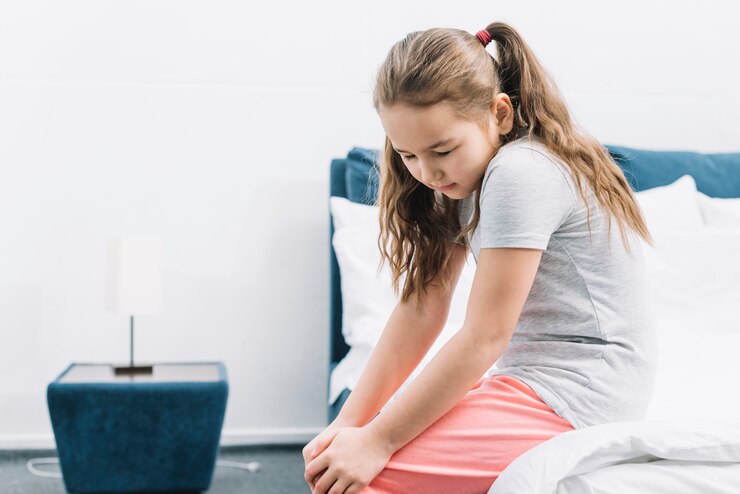Restless Legs Syndrome (RLS) in children can be a challenging condition to manage, causing discomfort and disrupted sleep. As parents, caregivers, and educators, understanding and addressing this condition with trustworthy, professional, supportive, and educational strategies is essential. Here’s how you can help children with Restless Legs Syndrome thrive.
Thank you for reading this post, don't forget to subscribe!
- Understanding Restless Legs Syndrome
Restless Legs Syndrome is a neurological disorder characterized by an irresistible urge to move the legs, often accompanied by uncomfortable sensations. These symptoms typically worsen in the evening or at night, making it difficult for children to fall asleep and stay asleep.
- Recognizing the Symptoms
Early identification of RLS can make a significant difference in managing the condition. Look out for signs such as:
Complaints of leg discomfort, described as tingling, itching, or crawling sensations.
A strong urge to move the legs, especially during periods of inactivity.
Difficulty falling asleep or frequent waking during the night.
Daytime fatigue or irritability due to disrupted sleep.
- Seeking Professional Help
If you suspect your child has RLS, consult a healthcare professional. A thorough evaluation, including a detailed medical history and physical examination, can help rule out other conditions and confirm a diagnosis. In some cases, a referral to a sleep specialist or neurologist may be necessary.
- Exploring Treatment Options
Effective management of RLS in children often involves a combination of lifestyle changes, home remedies, and medical treatments.
Lifestyle Changes:
Regular Exercise: Encourage daily physical activity, but avoid intense exercise close to bedtime.
Sleep Hygiene: Establish a consistent bedtime routine and ensure the sleep environment is comfortable and conducive to rest.
Dietary Adjustments: Ensure your child’s diet includes sufficient iron, magnesium, and vitamins. Avoid caffeine and sugar, particularly in the evening.
Home Remedies:
Warm Baths and Massages: These can help relax muscles and reduce discomfort before bedtime.
Stretching Exercises: Gentle stretching before bed can alleviate symptoms.
Medical Treatments:
Medications: In some cases, doctors may prescribe medications to manage RLS symptoms. Always follow the prescribed treatment plan and discuss any concerns with your healthcare provider.
- Providing Emotional Support
Living with RLS can be frustrating for children. Providing emotional support is crucial to help them cope with the condition.
Open Communication: Encourage your child to express their feelings and concerns. Listen empathetically and validate their experiences.
Positive Reinforcement: Celebrate small victories and improvements, reinforcing a positive outlook.
Stress Management: Teach relaxation techniques such as deep breathing, meditation, or mindfulness exercises to help manage stress and anxiety.
- Educational Resources
Educating yourself and your child about RLS can empower you both to manage the condition more effectively. Reliable sources of information include:
Healthcare Providers: Consult your child’s doctor for trusted advice and resources.
Books and Articles: Look for books and articles written by medical professionals or reputable organizations.
Support Groups: Connecting with other families dealing with RLS can provide valuable insights and emotional support.
- Collaborating with Educators
If your child’s RLS affects their school performance, it’s essential to work with their teachers and school staff to create a supportive learning environment.
Informing Educators: Share information about RLS with your child’s teachers, including symptoms and strategies for managing discomfort.
Flexible Arrangements: Discuss possible accommodations, such as allowing movement breaks or providing a quiet space for rest if needed.
- Monitoring Progress
Regularly assess your child’s condition and the effectiveness of the management strategies. Keep a symptom diary to track patterns and triggers, and maintain open communication with your healthcare provider to adjust the treatment plan as necessary.
Also read: How Many Hours Of Sleep Does A Teenager Need
Conclusion
Helping a child with Restless Legs Syndrome requires a multifaceted approach that combines medical intervention, lifestyle changes, emotional support, and educational resources. By fostering a trustworthy, professional, supportive, and educational environment, you can significantly improve your child’s quality of life and help them navigate the challenges of RLS with confidence and resilience.
For more resources and support, consult healthcare professionals and trusted organizations dedicated to pediatric neurological health. Together, we can ensure every child with Restless Legs Syndrome receives the care and support they need to thrive.



